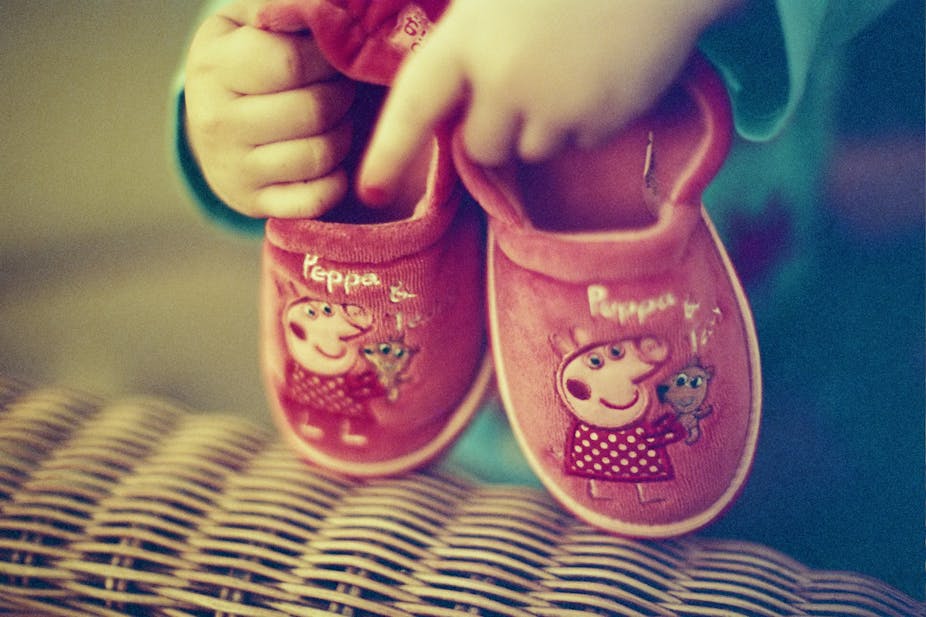Due to Australia’s small population and high concentration of few media voices, public broadcasters play a pivotal role in shaping the media ecosystem and cultural landscape. With the ABC and SBS under scrutiny ahead of the budget, The Future of Public Broadcasting series looks at the role of these taxpayer funded broadcasters, how they shape our media and whether they provide value for money.
Even before digital TV brought Australians the dedicated channels ABC 4 Kids and ABC 3 (also for kids), the absence of advertising on ABC TV has been an important feature of the service and particularly in its programming provision for children.
High-quality programs that appeal to children, delivered in an advertising-free environment, seem to meet the needs of the double constituency that makes up the audience: child viewers and parents who want their children to have quality entertainment experiences without being pushed products from the capitalist marketplace.
Who better to provide a shelter from corporate consumerism than the taxpayer-funded public broadcaster? But does the ABC really offer that protection?
When talking about television, there is a tendency to confuse the notions of “advertising-free” and “commercial-free”, and the place where a clear distinction between the two dissolves most rapidly is in children’s programming.
While the ABC remains free of commercial advertising, sourcing content from a wide range of global producers and distributors to fill the hours of airtime with “quality” programs, the properties that make up children’s programming today are often highly commercialised.
Take the British television program for pre-schoolers Peppa Pig, whose pedigree can shine a light on what is perhaps the more important distinction to be made here between the broadcasting environment and its content.
Leaving aside discussions about the show’s political orientation, Peppa Pig airs in Australia on advertising-free, public television (ABC 4 Kids) – that is its local broadcast environment. But its origins are firmly commercial.
London animation company Astley Baker Davies produces the show and in the UK it airs on the commercial free-to-air station, Channel 5 and Pay TV’s NickJr; similarly in the US, it airs on commercial cable network Nickelodeon and NickJr.
In between the production house and the broadcaster stands the commercial distributor, eOne (Entertianmentone). eOne’s licensing portfolio contains some of the top children’s properties, Peppa Pig, Ben and Holly’s Little Kingdom, and for the teen set The Twilight Saga. Peppa Pig resides within the firm’s Family division based in London but their TV branch also has offices in Los Angeles, Montreal, Toronto and Sydney.
Peppa Pig is seriously bringing home the bacon. If you have not yet run across the Peppa merchandise, a visit to your local ABC Shop will be an eye-opener. Given the economic realities of ABC’s financials, they’d be fools not to partake in the profitable retailing of merchandise associated with the brands they air, although they do not always have exclusive rights and licenses.
Sales of plush Peppas fund more advert-free quality TV.
Let’s not kid ourselves, this is consumerism at its best. From “big boy” underpants and PJs to ice packs for ouchies, plush toys, bath toys, back packs, figurines, paper party plates and Peppa Pig play dough, the ABC Shop sells consumables for children that are based on the content that they run on ABC 4 Kids: Giggle & Hoot, Ben and Holly, Octonauts, The Wiggles, Play School, Postman Pat and many more.
Nearly every character or concept has a product line. So, despite being broadcast in an advert-free environment locally, the characters of these beloved TV shows are commercialised, global product brands and at their core is television – quality television.

Commercialisation and quality are not mutually exclusive but when it comes to television and kids, it seems to get the adults confused. Recently a parent told me:
Oh, he doesn’t watch TV, he just uses the iPad.
The little fella was watching TV programs on the iPad. This type of viewer migration from one device to another is not unusual in households with tablets and smart phones. But in addition to offering another screen for TV content, mobile devices and online services also offer children a range of hybrid experiences.
Content that normally airs with advertisements in a commercial broadcasting environment can be accessed online in an environment that, while not entirely advert-free, appears to only be selling children the content they are already consuming, just like the ABC Shop.
Take Dora the Explorer, which runs free-to-air on Channel Nine. Australians can access the NickJr. website to view videos, play games, and download craft activities based on the popular television programs.
A recent visit to the NickJr. homepage loaded three adverts: a banner for Beaurepaires, a click-through for Energy Australia, and a click-through for Open Universities Australia. While there is advertising here, it’s not aimed at children and the site’s other features are so much more inviting that children would be unlikely to change electricity providers.
Quality content is device agnostic and the migration of TV content to mobile devices just might help improve TV’s status in the culture wars that have deemed free-to-air TV to be little more than mass mediocrity.
Read more articles in The Future of Public Broadcasting.

